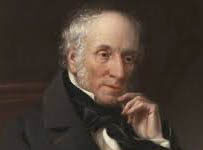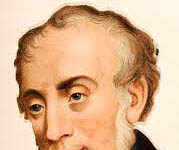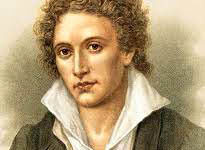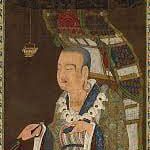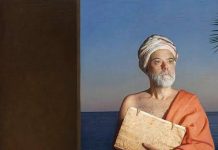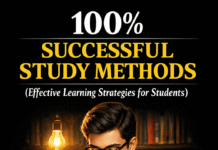The Classification of Literature
The Classification of Literature
The Classification of Literature
Literature, resembling a lush and varied landscape painted with the brushstrokes of human creativity, encompasses an extensive array of forms, genres, and styles that collectively form a vibrant mosaic of artistic expression. Just as a skilled gardener meticulously arranges flowers of varying colors, sizes, and scents to create a harmonious garden, literature is thoughtfully categorized into various genres based on shared characteristics. This classification system serves as a compass, guiding readers through the vast expanse of literary creations, allowing them to explore different themes, narrative styles, and emotional landscapes. Much like the chapters of a book that beckon readers to immerse themselves in captivating narratives, these classifications offer readers a roadmap to navigate and deeply engage with the rich world of literature.
Fiction: Fiction, a cornerstone of literary exploration, resembles an artist’s palette teeming with a myriad of colors, each hue representing a unique narrative possibility. This genre is a fertile ground for authors to cultivate stories born from their boundless imagination, akin to a painter crafting intricate scenes on a canvas. It encompasses an array of subgenres, including novels and short stories, where authors breathe life into characters, build immersive settings, and weave intricate plots that resonate with readers. An exemplary work in this realm is George Orwell’s “1984,” a dystopian novel that serves as both a cautionary tale about the perils of unchecked power and a vivid demonstration of the narrative possibilities fiction offers.
Non-Fiction: Non-fiction, much like a crystal-clear mirror reflecting reality, comprises literary works rooted in factual events and real-world experiences. It is the realm where authors engage with history, personal insights, and accumulated knowledge, creating narratives that offer readers a window into authentic lives and genuine occurrences. Similar to the diary of an intrepid explorer, non-fiction includes genres such as essays, biographies, and memoirs. One shining example is Malala Yousafzai’s “I Am Malala,” a poignant memoir that chronicles her extraordinary journey and stands as a testament to the power of human resilience and courage.
Poetry: Poetry, akin to a symphony of words, is a genre that dances gracefully between rhythmic patterns and emotive language. It evokes sensations and imagery through carefully selected words and artistic structure, much like a composer arranging musical notes to create a harmonious melody. Poets, much like skilled conductors, craft verses that resonate deeply with readers’ emotions and thoughts. Maya Angelou’s timeless poem “Still I Rise” is a testament to the evocative power of poetry. Through vivid metaphors and powerful imagery, it encapsulates the spirit of resilience and empowerment, much like a soaring eagle against the boundless sky.
Drama: Drama, resembling a stage illuminated by a brilliant spotlight, encapsulates the realm of theatrical performances and scripted narratives. In this genre, stories unfold through dialogues, actions, and character interactions, much like actors breathing life into their roles under the theater’s luminous glow. This genre’s power lies in its ability to bridge the gap between the page and the stage, with characters springing to life as they embody conflicts, emotions, and complex human experiences. One iconic example is William Shakespeare’s “Romeo and Juliet.” The tragedy of star-crossed lovers takes on a new dimension when performed on stage, capturing audiences with its timeless exploration of love, passion, and the fateful turns of destiny.
Fantasy and Science Fiction: Fantasy and science fiction, akin to portals leading to uncharted realms, whisk readers away to alternate universes brimming with wonders and possibilities. These genres are akin to a painter’s brush, creating entirely new landscapes that stretch the boundaries of reality. The “Harry Potter” series by J.K. Rowling exemplifies the captivating allure of these genres. Through intricate world-building and imaginative storytelling, Rowling transports readers to a realm of magic, spells, and mythical creatures, while simultaneously weaving universal themes of friendship, bravery, and the battle between good and evil.
Historical Fiction: Historical fiction, much like a time machine, combines the fabric of factual events with the threads of fictional narratives. This genre allows readers to traverse history’s corridors, uncovering hidden treasures that shed light on different eras and human experiences. Hilary Mantel’s “Wolf Hall” immerses readers in the Tudor era, painting a vivid picture of the court of Henry VIII and the ascent of Thomas Cromwell. Through meticulously researched details and artful storytelling, historical fiction provides a bridge that connects readers with bygone epochs and the complex tapestry of human history.
Mystery and Thriller: Mystery and thriller genres, akin to enigmatic puzzles waiting to be solved, captivate readers with their intricate plots, suspenseful narratives, and unforeseen twists. This genre is comparable to a labyrinth, where readers and characters alike navigate through mazes of suspense and intrigue. Agatha Christie’s masterpiece “Murder on the Orient Express” exemplifies the genre’s allure. Through meticulous clues, clever plot twists, and the ingenious detective Hercule Poirot, readers are immersed in a riveting mystery, akin to engaging in a thrilling puzzle-solving journey.
Romance: Romance, much like an intricate bouquet of emotions, delves into the complex realm of human relationships and the journey of love. It is a genre that weaves tales of affection, passion, and connection, akin to a skilled artisan weaving a delicate tapestry of emotions and experiences. Jane Austen’s timeless work “Pride and Prejudice” exemplifies the genre’s charm. Set against the backdrop of Regency-era England, the novel portrays the intricate dance of social norms, personal growth, and, of course, romance, much like a bouquet of emotions gradually unfurling with each page turned.
Biography and Autobiography: Biographies and autobiographies, akin to illuminated manuscripts of individual lives, offer readers an intimate glimpse into the experiences, struggles, and achievements of real people. Much like skilled painters capturing the essence of their subjects, these genres provide a gallery of human lives, showcasing the diversity of human existence. Nelson Mandela’s monumental autobiography, “Long Walk to Freedom,” stands as a testament to the resilience and the unwavering pursuit of justice, akin to a mural depicting the triumphant journey of the human spirit.
The classification of literature, much like a rich and varied garden, provides readers with an extensive range of genres to explore. Each genre represents a distinct brushstroke that contributes to the vibrant canvas of human imagination, expression, and understanding. Whether through fiction, non-fiction, poetry, drama, fantasy, historical fiction, mystery, romance, biography, or autobiography, literature’s classifications guide readers on a captivating journey through the corridors of human creativity. Just as a skillful curator arranges masterpieces in an art gallery, the classification system offers readers an organized and insightful pathway to engage with the boundless creativity, emotions, and wisdom that literature unfailingly delivers. These genres, like facets of a multifaceted gem, collectively illuminate the remarkable pot of human experiences, fostering a deep connection between authors and readers across cultures, eras, and generations. 0 0 0.
The Classification of Literature
N.B. The article ‘The Classification of Literature’ originally belongs to the book ‘The Origin Evolution & Functions of Literature‘ by Menonim Menonimus. The Classification of Literature
Books of Literary Criticism by M. Menonimus:
- World Short Story Criticism
- World Poetry Criticism
- World Drama Criticism
- World Novel Criticism
- World Essay Criticism
- Indian English Poetry Criticism
- Indian English Poets and Poetry Chief Features
- Emily Dickinson’s Poetry-A Thematic Study
- Walt Whitman’s Poetry-A Thematic Study
- Critical Essays on English Poetry
- Tawfiq al-Hakim’s Novel: Return of the Spirit-An Analytical Study
- Tawfiq al-Hakim’s Novel: ‘Yawmiyyat Naib Fil Arayaf’-An Analytical Study
- Analytical Studies of Some Arabic Short Stories
- A Brief History of Arabic Literature: Pre-Islamic Period (500 AD-622 AD)
- A Brief History of Arabic Literature: Early Islamic Period (622 AD-661 AD)
- Reviews on William Shakespeare’s Works
- Reviews of Charles Dickens’ Works
- Reviews of John Milton’s Literary Works
- Reviews of Some Iconic Travelogues
- Shakespeare’s Sonnets-Critical Studies
- Analytical Studies of Selected Poems of Sarojini Naidu
- Analytical Studies of Selected Poems of Rabindranath Tagore
- Analytical Studies of Selected Indian English Poems
- Reviews of Selected Motivational Books
- Origin Evolution & Functions of Literature …
Additional Searches::
- The Functions of Literature
- Evolutionary Literary Study
- Functions of Literature
- Principles of Literature
- Literary Theory
- Literature-Definition, Forms, and Types
- The Classification of Literature


